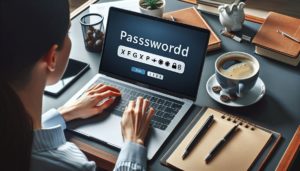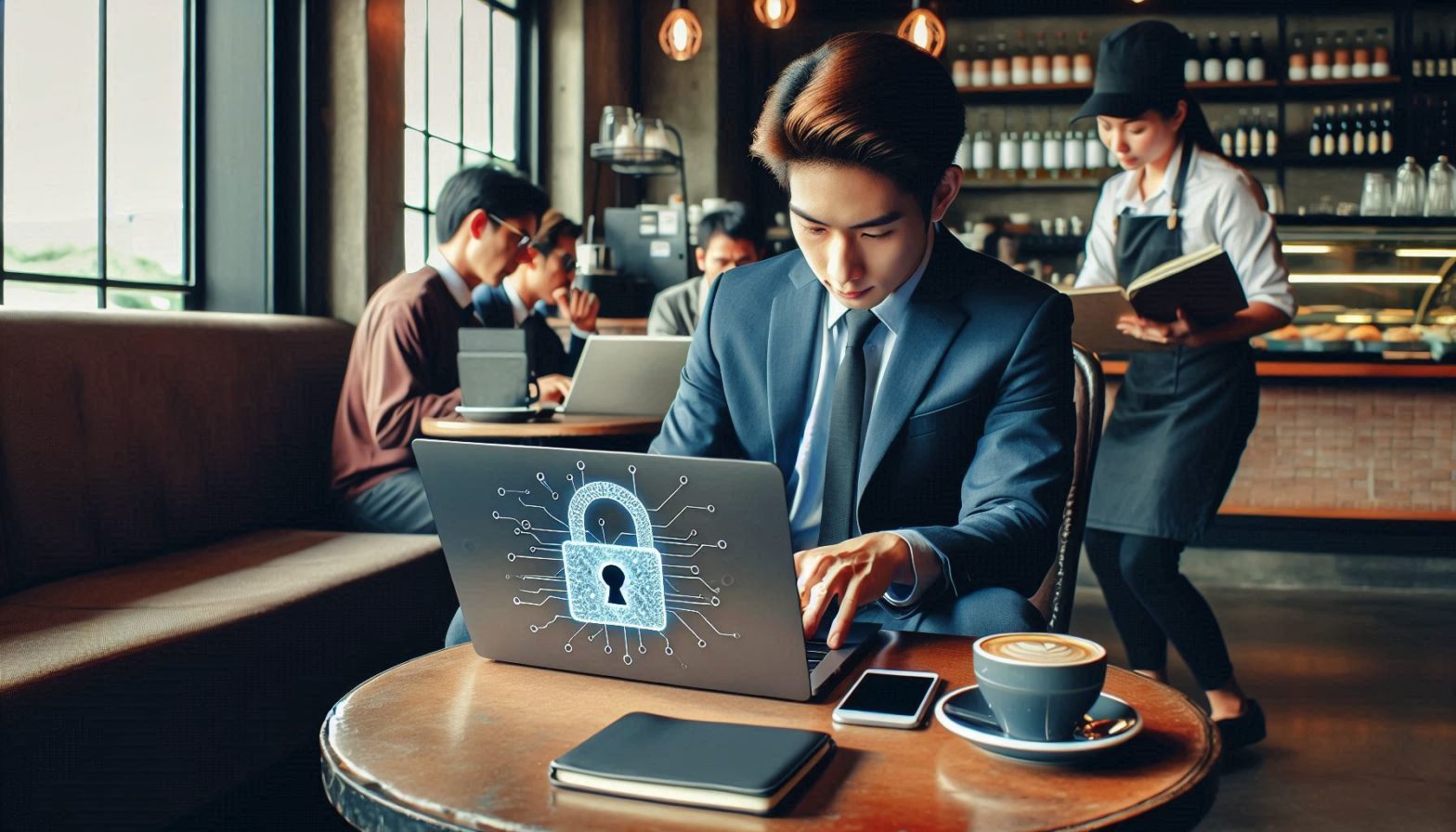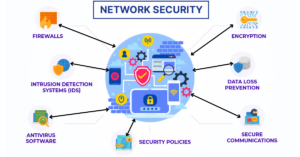Email rules corporate communication in our digital era. It links teams, drives decisions, and archives vital data. Securing corporate email isn’t optional—it’s essential. As the digital backbone of business, email demands protection. Its role in connecting, deciding, and storing makes security non-negotiable. In today’s landscape, safeguarding corporate email is a must-have, not a nice-to-have. Whether using ”Sunpharma Webmail ”or another corporate email, protect your access. This keeps your company’s data confidential and intact.
Why Secure Email Access Is Important
Cybercriminals prey on email systems, deploying sophisticated tactics to pilfer confidential information. Fortifying your email defenses is crucial in this digital battlefield. Secure access protocols are the first line of defense against these attacks. This includes login credentials, financial info, and proprietary business information. A breach in email security can have severe consequences. It can cause data loss, financial damage, and harm to your reputation. Thus, every employee must understand and apply secure practices when accessing corporate email.
Creating a Strong Password
Fortify your corporate email with an impenetrable password. Craft a 12-character shield mixing letters, numbers, and symbols. Steer clear of personal details like names. Weak choices like ”123456” or ”password” invite cyberattacks. Your digital fortress demands a robust guardian, not a flimsy lock. Elevate security with a complex key that baffles hackers and safeguards sensitive data. Remember, a strong password is your first line of defense against digital intruders.

Best practices for a strong password:
- Use a combination of upper and lower case letters.
- Include numbers and special characters.
- Imagine your online accounts as a row of dominos. One falls, they all topple. That’s the danger of password reuse. Instead, build unique fortresses for each site. Combine alphabetic characters, numeric digits, and special characters imaginatively. Consider enlisting a password manager as your digital architect. It generates and protects intricate cryptographic keys. Regularly renovate these barriers to outsmart evolving cyber threats. Your online security depends on diversity and vigilance.
- Craft a memorable yet secure passphrase: ”Sunsets & Tea Cups 42!” Simple to recall, tough to crack.”
Change your password regularly for strong protection. Suspicion of compromise demands swift action.
Enabling Two-Factor Authentication (2FA)
Bolster your email security with two-factor authentication (2FA). This vital safeguard demands identity verification beyond a simple password. 2FA creates a strong barrier against unauthorized access. It protects your digital communications. Your mobile device gets a code. You need it to access your account. Thieves who nab your password still can’t breach your account. Two-factor authentication acts as an impenetrable barrier, thwarting unauthorized access attempts. Your data is secure. It has protection beyond a simple password. They need the second authentication factor.
Setting up 2FA is usually easy. It boosts your email account’s security to a higher level. Strong protection for your work email awaits. Enable two-factor authentication—a powerful shield against hackers. Most company systems offer this vital security feature. Don’t leave your account vulnerable. So, enable it.
Avoiding Phishing Scams
Imagine opening your inbox to find an urgent message. It seems legitimate, but it’s a trap. This is phishing, a favorite tool of hackers targeting corporate email. They cast wide nets, hoping employees take the bait. One click can compromise an entire network. Companies scramble to patch vulnerabilities, but cybercriminals evolve. The cycle continues, making vigilance crucial in protecting sensitive information. These scams often come as emails. They look like they are from a trusted source, such as a colleague, your IT department, or a service provider. Links or attachments in the email may beckon. Beware of such invitations. They often hide threats. Cybercriminals use these lures to ensnare unwary users. Rash clicks can leak sensitive information. Stay vigilant when examining messages. Analyze sender information and message contents to shape your reply. This could lead to a fake login page or install malware.
To protect yourself from phishing scams:
- Always verify the sender’s email address. This is vital if the email requests sensitive information.
- Before clicking, glide your cursor over links. Their destinations reveal themselves, allowing for informed browsing choices. This simple habit boosts online safety and navigation. It empowers users to explore the web with confidence.
- Scrutinize unfamiliar attachments, regardless of the sender’s clear familiarity. A known name doesn’t guarantee safety. Cybercriminals often exploit trust, masquerading as contacts. Verify suspicious files before opening. Stay vigilant to protect your digital security. Unexpected attachments pose risks, demanding careful consideration and verification.
- Verify suspicious emails through alternate channels. Clarify with the sender through a phone call or personal meeting. Check official websites instead of clicking links. Scrutinize the ”From” address for subtle misspellings. Rely on your intuition when a situation raises suspicions. Stay vigilant to protect your sensitive information from phishing attempts.
Legitimate businesses never ask for passwords through email. Be wary of any message requesting this sensitive information. Protect your accounts by keeping login credentials private. Phishing scams often mimic trusted companies to steal data. Stay vigilant online and verify requests through official channels. Your digital security depends on safeguarding access to personal accounts.
Using Secure Networks
Secure networks safeguard corporate email access. Public Wi-Fi in cafés, airports, and hotels poses risks. Hackers take advantage of these vulnerabilities with ease. VPNs offer a solution for checking email on public networks. They create encrypted tunnels between devices and the internet, shielding data from interception. Always rank security when handling sensitive information away from the office.
Protect your home network. Use a robust Wi-Fi password. This simple step bolsters security, keeping digital intruders at bay. A strong, unique code acts as a shield, safeguarding your online world. Don’t underestimate its power. A strong password is your best defense against cyber threats. Use WPA3 encryption if your router supports it. Don’t use the default password from your ISP. It has vulnerabilities, making it susceptible to hacking.
Software receives frequent updates.
Email security hinges on timely software updates. Hackers prey on outdated systems, exploiting known vulnerabilities. Regular patches fortify your digital defenses. This vigilance extends beyond email clients. It includes operating systems, web browsers, and popular apps. Stay current, stay secure.
Stay secure with the latest patches by turning on automatic updates. This step shields your system from new threats. It ensures protection without manual work. Safeguard your device’s defenses, freeing you to concentrate on priorities. Don’t leave your security to chance—let automatic updates safeguard your digital world. They protect you. Establish a routine to scrutinize for updates when automatic ones are absent.
Monitoring Account Activity
Check your email account for suspicious transactions and alerts. This can help you spot and respond to security threats early. Most email services let you check recent login activity. They show the devices used and the locations accessed.
If you see any suspicious activity, like logins from unknown locations or devices, act at once.
- Change your password.
- Activate two-factor authentication now. This crucial security measure adds an extra layer of protection to your accounts. By requiring a second form of verification, 2FA thwarts unauthorized access attempts. Don’t delay—safeguard your digital life today. Install this simple yet powerful defense against cyber threats.
- Alert authorities immediately about the suspicious activity. Reach out to your IT team or email provider. Quick action can prevent further issues. Don’t delay—inform the experts immediately. They’ll investigate and secure your account if needed.
Early detection can prevent unauthorized access from escalating into a full-blown security breach.

Encrypting Sensitive Emails
Protecting sensitive data demands robust security measures. Encryption offers a formidable defense, scrambling information into unreadable code. Only authorized users with the right key can decipher the encrypted content. This digital armor safeguards everything from personal messages to classified documents. As cyber threats evolve, encryption is vital for data privacy. It is a key weapon in the battle for security. An encrypted email scrambles its contents. Only the intended recipient can read it. They have the decryption key. This ensures that even if someone intercepts the email, the information stays secure.
Encryption, a key security feature, graces many corporate email platforms. Some systems offer native protection, while others rely on external solutions. This safeguard conceals sensitive communications, protecting them from unauthorized access. If you send sensitive info, like financial data, encrypt your email. It will protect it from unauthorized access.
Best Practices for Mobile Email Access
Remote work surge fuels mobile email access, raising security risks. Portable devices, easily stolen or misplaced, pose threats to corporate data. As employees use smartphones for work, companies must balance convenience with protection. Robust security measures become crucial in this evolving work landscape. Protect your valuables with the utmost care to prevent loss.
Best practices for mobile email security
- Protect your device with a strong PIN or advanced biometric authentication. Fingerprints and facial scans offer advanced protection. These methods protect your data. They keep your personal info safe from unwanted access. Choose the option that suits you best for peace of mind.
- If your device vanishes, don’t panic. Install immediate data destruction through remote wipe protocols. This safeguard erases everything. It restores privacy if your gadget falls into the wrong hands. Set it up now for peace of mind later. Quick action can prevent identity theft and protect your digital life. Remote wipe: a crucial defense against tech-savvy thieves.
- Keep your device secure by limiting stored sensitive content. Delete confidential emails after reading. Save important attachments to ecncrypted loud storage instead of local drives. Clear out old messages and files on time. Use two-factor authentication and strong passwords on email accounts. Enable remote wipe capabilities as a precaution. With smart habits, you can protect private information without sacrificing convenience.
- Keep your phone’s OS and email software current. Regular updates patch security flaws, enhance features, and boost performance. Activate automatic updates or perform manual checks for protection. Don’t delay. Install the latest versions. They protect your data and improve your mobile experience.
Also visit: https://username531.blogaaja.fi/wp-admin/post.php?post=375&action=edit
FAQs
Q: What if I forget my super-strong password?
A: Stay calm! Email providers offer password recovery options. You answer security questions or use a backup email to regain access. This common feature ensures you’re not locked out for long.
Q: How can I tell if an email is really from my bank or from another company?
A: Caution is key when faced with unexpected appeals for private details. Verify such requests through official company channels, not via the original email. Always scrutinize unsolicited messages demanding personal information. Trust your instincts. Protect your data. Reach out to the company through its designated channels.
Q: What’s the best VPN to use?
A: VPN options abound. Co mpare costs, features, and user feedback. Seek a service aligned with your requirements. Thorough research yields the best fit for your specific needs.
Conclusion
Your corporate email guards vital company assets. Protect data with robust security measures. Strong passwords and two-factor authentication forma solid defense. Stay vigilant against phishing attempts. Connect only through secure networks. These practices bar unauthorized entry, safeguarding your organization’s vital data.
Cyber threats loom large, ever-changing. Stay alert. We navigate a digital landscape fraught with unseen dangers. Hackers evolve, adapting tactics. Our defenses must keep pace. Constant vigilance protects vital data. Networks demand round-the-clock monitoring. Security updates are crucial. Train staff to spot phishing attempts. Encrypt sensitive information. Save copies of your data at frequent intervals. Cyber hygiene habits safeguard against breaches. Awareness is our first line of defense. Remain watchful, for the digital realm never sleeps. It is vital to stay proactive to secure email. These best practices will help secure your organization. They will keep your communications confidential and your data safe.


